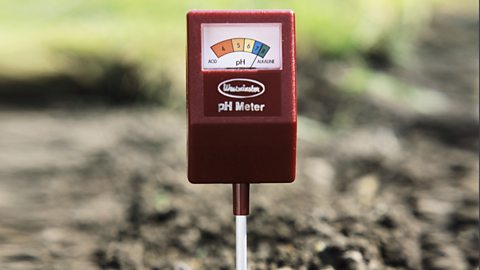Abiotic factors affecting the abundance and distribution of organisms
The abundance is the number of organisms in an ecosystemThe living organisms in a particular area, together with the non-living components of the environment.. A communityAll the organisms that live in a habitat (plants and animals). is all of the living organisms within a habitatA place where plants, animals and microorganisms live.. Communities are affected by abioticNon-living elements of an ecosystem, such as climate, temperature, water, and soil type. factors. Abiotic factors are non-living.
They include:
- light intensity
- temperature
- moisture levels
- pH of soil
Light intensity
Some plants have evolved for optimumThe best or most appropriate - for instance, the conditions under which an enzyme works best (eg temperature and pH). growth in bright sunlight. An example of this is a cactus houseplant. Cacti originally come from deserts where they grow in bright sunlight. Other plants have evolved to grow in shade.
Many orchids, which are also kept as houseplants, grow on trees in the rainforest and have evolved for optimum growth in darker conditions. If an orchid was put on a bright windowsill and a cactus in a dark corner of a room neither plant would grow well.
Temperature
Both animals and plants have evolved to grow healthily at their optimum temperatures. If you planted either a cactus or orchid houseplants outside in cold temperatures, they would die. Similarly, animals that have evolved to live at the North Pole, such as the polar bear, could not survive in warmer conditions.
Moisture levels

More people kill houseplants by overwatering than by underwatering them. Many plants cannot survive in waterlogged soils because there is little oxygen. The cells in their roots are unable to respireTo engage in respiration, the energy-producing process inside living cells., meaning that the roots rot and the plant dies. Other plants, such as pitcher plants, grow best in bogs where the moisture levels are high. Soil moisture meters can accurately determine how wet an area is.
pH of soil
The pH of soil can have a huge effect on the range of plants that are able to grow. Some plants, like azaleas, grow best in acidic soils and will quickly die if planted in alkaline soils. Others, like clematis, prefer alkaline soils. Some, like the hydrangea, can grow in both. These plants are unusual in that their flower colour changes in different soils. Just like universal indicator paper, hydrangea flowers are blue in acidic soils and pink in alkaline soils.
The pH of water can also affect the aquatic organisms that are found there. Different species have evolved to survive at different pH levels found within water. pH meters can accurately determine the pH of soils.
Learn more about biotic and abiotic factors with Dr Alex Lathbridge.
Listen to the full series on 91Čȱ¬ Sounds.
In this podcast, learn the key facts about biotic and abiotic factors. Listen to the full series on 91Čȱ¬ Sounds.